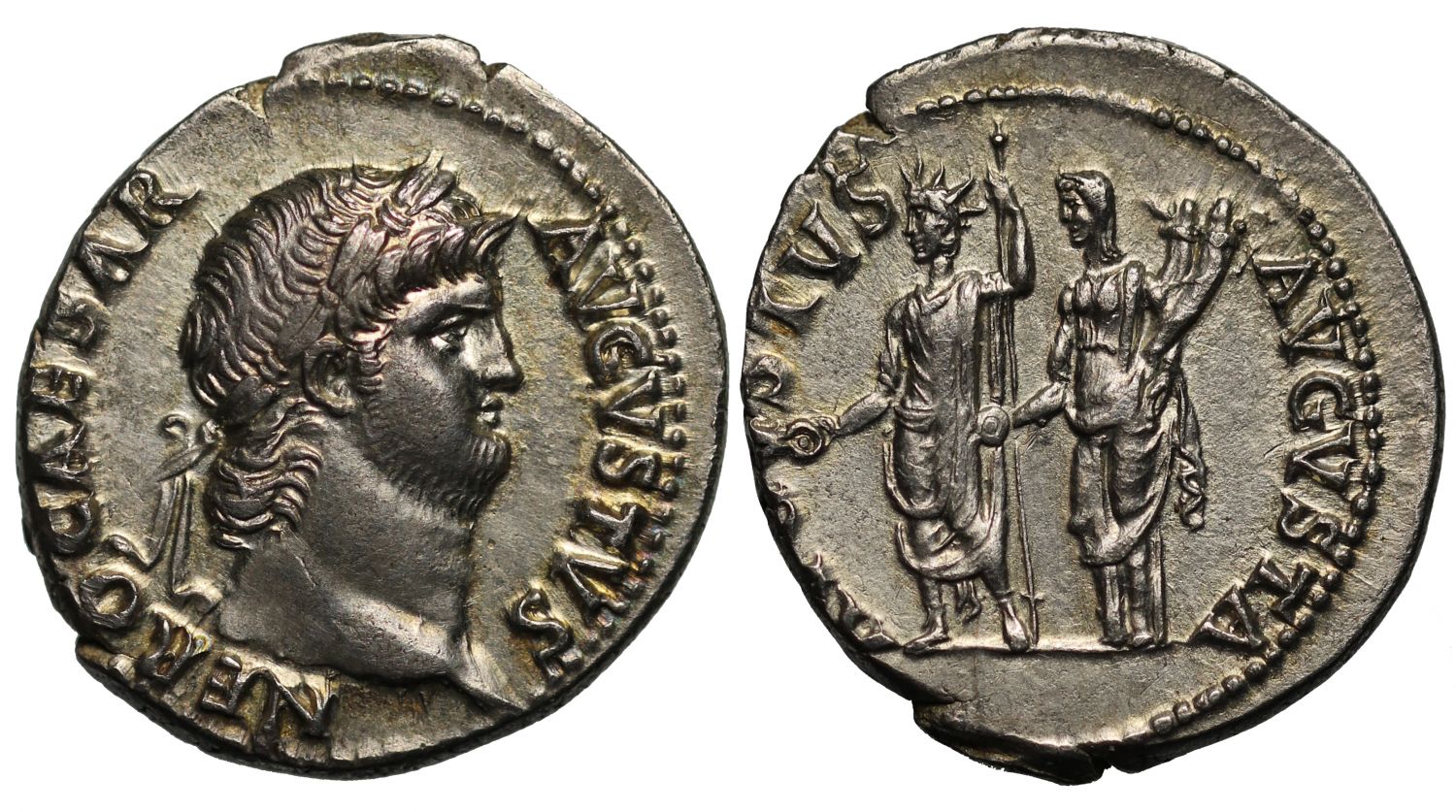In the realm of ancient coinage, few artifacts capture the cultural and religious essence of an era as profoundly as a denarius minted in AD 198. This particular coin features the image of Cybele, revered as the Mater Deum or Mother of the Gods, showcasing the deep reverence the Roman Empire held for this mighty deity. Cybele’s depiction on the coin is not merely an artistic endeavor but a profound testament to her significance in Roman religion and mythology.
Cybele: The Great Mother

Cybele, also known by her full Roman title Mater Deum Magna Idaea (Great Idaean Mother of the Gods), was venerated as the great mother of all gods, humans, and animals. Her worship transcended mere idolatry; she was the embodiment of the fertile earth and the protector of cities and nations. The image of Cybele on the denarius is rich with symbolism, reflecting her powerful and nurturing nature.
The Iconography of the Coin
On this denarius, Cybele is depicted enthroned, a regal and commanding presence. Flanked by two lions, her imagery draws from the ancient iconography of the mother goddess, symbolizing her dominion over nature and her protective aspects. The lions, fierce and majestic, are her guardians and symbolize her strength and authority.

In one hand, she holds a branch, a symbol of growth and fertility, indicating her role as a life-giver. In the other hand, she grasps a scepter, representing her sovereignty and divine power. Resting on a hand drum, known as the tympanum, Cybele’s portrayal is complete. The drum is an instrument associated with ecstatic rituals and celebrations in her honor, underscoring her connection to ecstatic worship and the mysteries of life and death.
The Role of Cybele in Roman Religion
Cybele’s significance in Roman religion was profound. Originally worshipped in Phrygia (modern-day Turkey), her cult was introduced to Rome during the Second Punic War. The Romans, seeking divine assistance to repel Hannibal, adopted her worship, which quickly gained prominence. Her temple on the Palatine Hill became one of the most important religious sites in Rome.

As the Great Mother, Cybele’s worship included ceremonies that were both public and private. Public festivals, known as Megalesia, involved games, feasts, and dramatic performances, while private rites were often more mysterious and intense, involving music, dance, and sometimes even acts of self-mutilation by her priests, the Galli.
The Symbolism of the Coin

The denarius featuring Cybele not only served as currency but also as a medium for propagating the emperor’s divine favor and legitimacy. By associating himself with Cybele, the emperor Commodus, who ruled from AD 180 to 192, sought to underscore his connection to the divine and the protection of Rome. The coin thus became a powerful symbol of imperial authority and religious devotion.
In conclusion, the depiction of Mater Deum on the Roman denarius minted in AD 198 is a remarkable representation of Cybele’s esteemed position in Roman culture and religion. As the great mother of all gods, humans, and animals, her image on the coin conveys her nurturing yet formidable nature. This artifact serves not only as a piece of ancient currency but also as a testament to the enduring legacy of Cybele, the Great Idaean Mother of the Gods.
